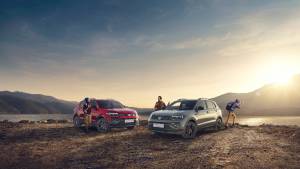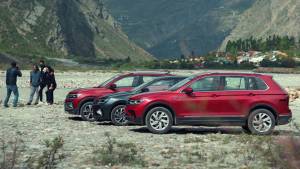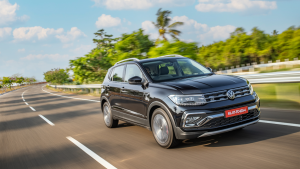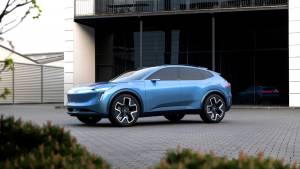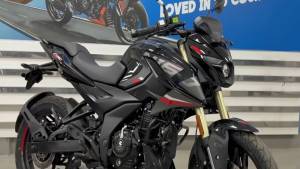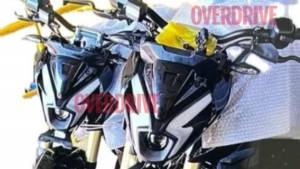Volkswagen Taigun GT 1.5 TSI MT/DSG review - is this the European crossover you were waiting for?
It was back in 2014 that Volkswagen showed their intentions of creating a compact crossover called the Taigun. It was a concept that was designed to take on the sub-4m segment and had everything one would ask of a crossover of that order - compact dimensions, sophisticated styling and even a spare wheel on the boot. But VW knew that to take on the new-age competition of the future, the Taigun would need a lot more space and tech than what the concept's VW Up! PQ12 underpinnings (or even Polo's PQ25 platform) would offer. This debate has cost them seven years, in which, the brand has managed to localise its more modular and advanced MQB platform - both in terms of cost as well as India-specific engineering. In this time, the Taigun that utilises this Indian-ised platform has also grown to compete with the mid-size crossovers and while it doesn't set any new benchmarks, the Taigun certainly deserves your attention.
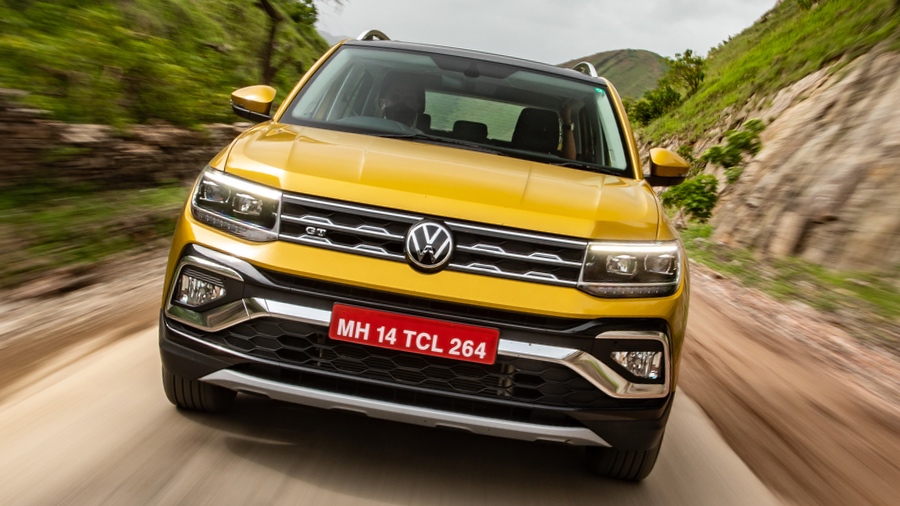
Design
From its name to its design, the Taigun seems like it is cut from the same cloth as the T-Roc, Tiguan and the Touareg. But its boxy styling, straight lines and upright proportions make it appear more SUV like than the T-Roc. "Even from a mile away, you know it's a Volkswagen," says, Emmanuel Al Nawakil (Director Product And Sales Planning Volkswagen India), which is a good thing in my books, considering how well VW's designs age. But there is no denying that the Taigun is the most radical VW to have been launched in India, and certainly one that has more chrome than the Polo, Vento and T-Roc's shiny bits put together. Blame or thank it all to the customer clinics that VW conducted when finalising the Taigun's design. I think it could polarise buyers and VW should offer the option of lesser bling by way of a black edition or a black pack.
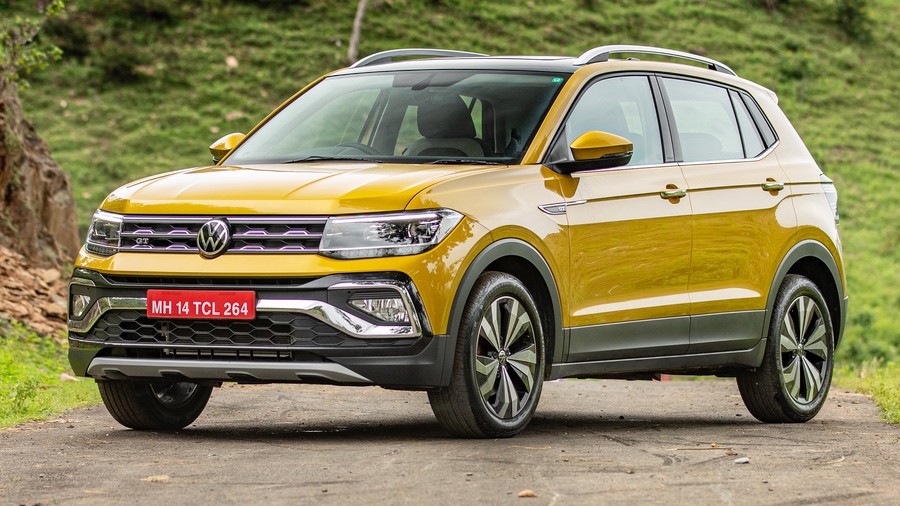
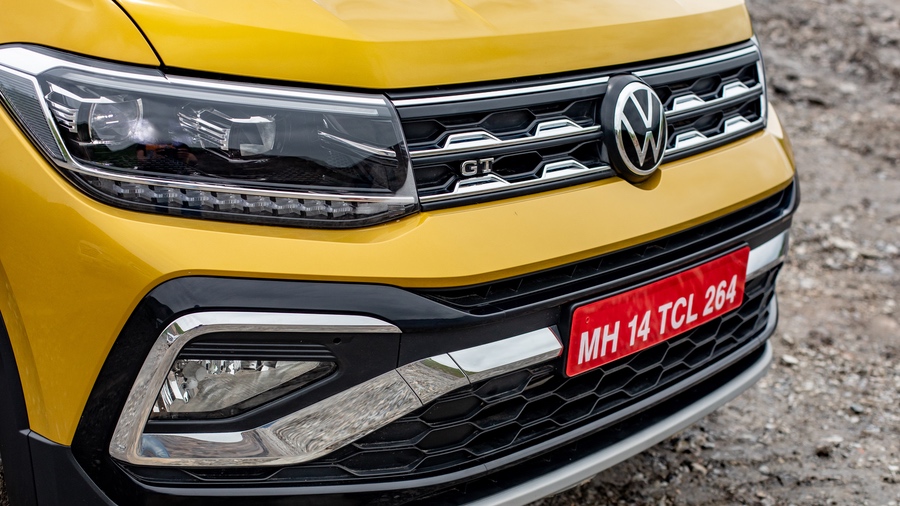
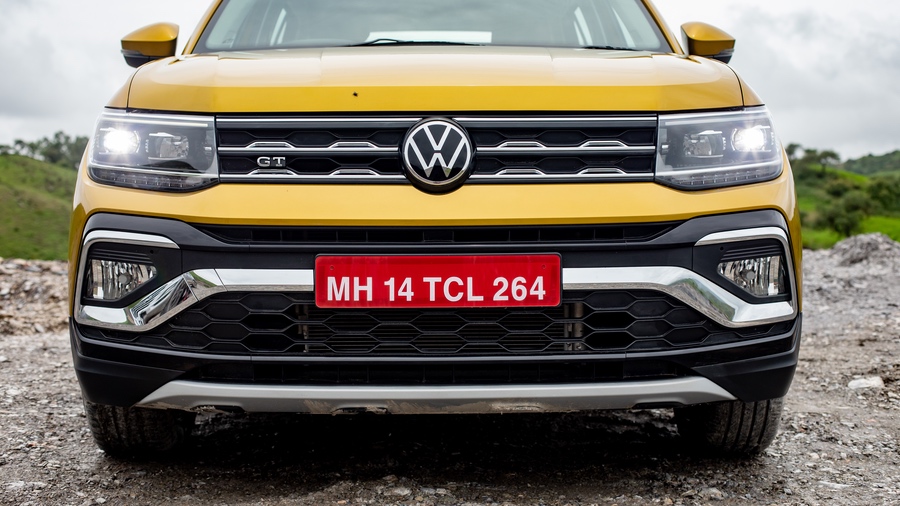
The other polarising bit is the chunky taillight appliqué. Something sleeker would have looked more elegant, I think. It is likely to grow on you though, especially when you realise that VW puts such seamless strips of LED taillights only on its premium cars, including models from Porsche and Audi. The wide strip of lighting also helps the Taigun appear wider than it is.
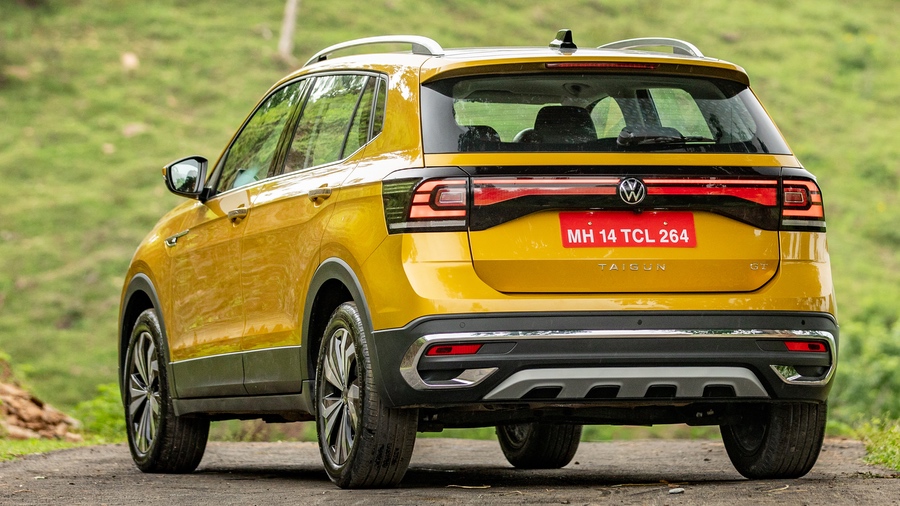
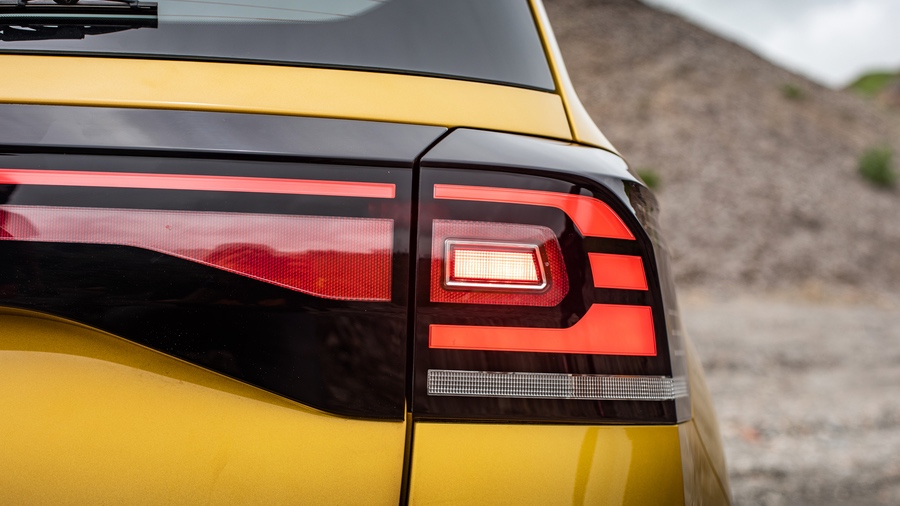
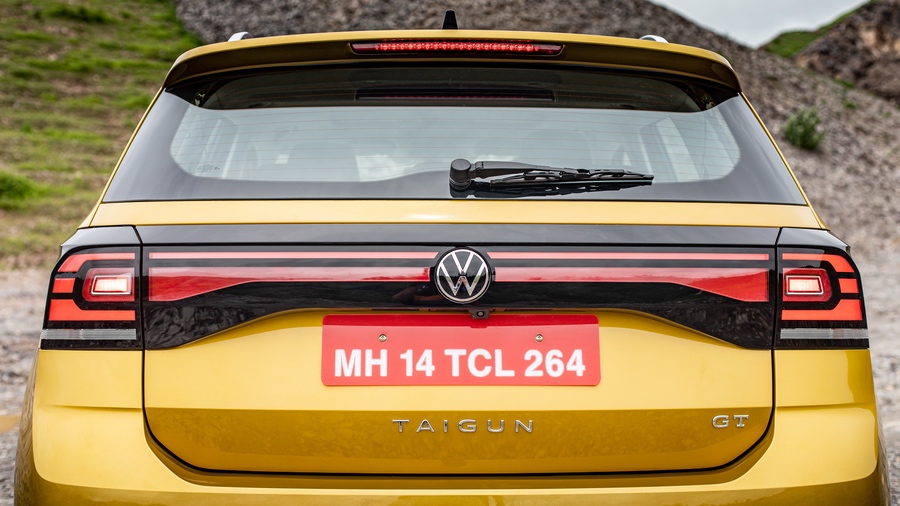
All the chrome and tailgate appliqués are common across variants and the only visual differentiators are the wheels and the frontal lighting elements. The LED headlamps on the range-topping variants certainly look and work better, but the large aperture also makes the lower-spec halogens achieve an excellent throw and spread.
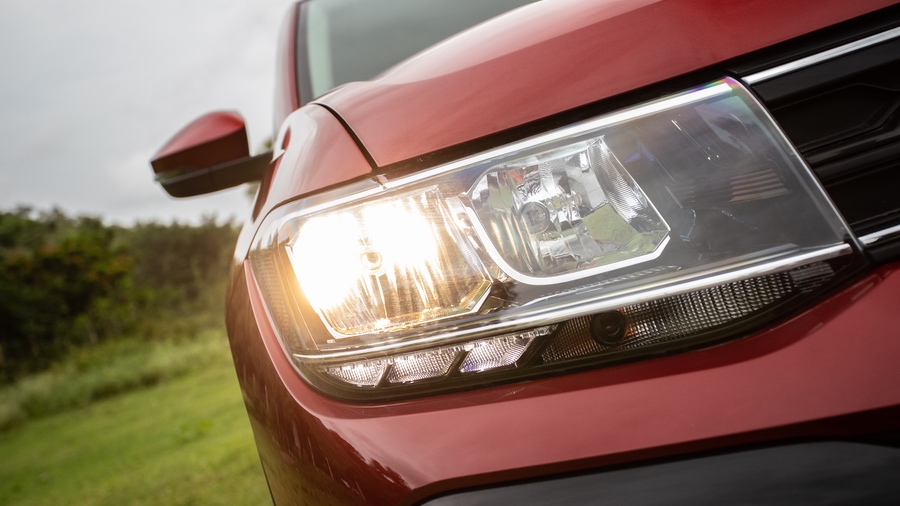
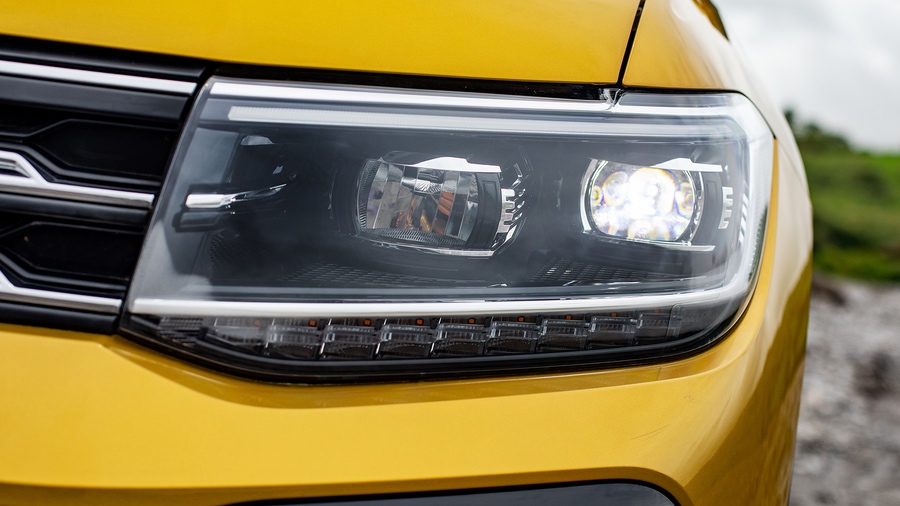
So irrespective of the variant you choose, the Taigun appears like a premium European crossover fit to wear the VW badge and the styling is likely to appeal to everyone from first time VW buyers to those upgrading from Polos and Ventos.
Cabin
Like the Skoda Kushaq that it shares its underpinnings with, the Taigun too appears compact like a typical MQB product, but a quick measurement of the cabin space tells you that the room is comparable to its Korean rivals. So if you are the latter kind upgrading from the VW hatch or sedan, you will find the cabin to be a lot roomier than what the exterior design might suggest and people like you, in particular, will appreciate why VW waited to Indian-ise the MQB platform than rushing to the market with crossover built on an older platform.
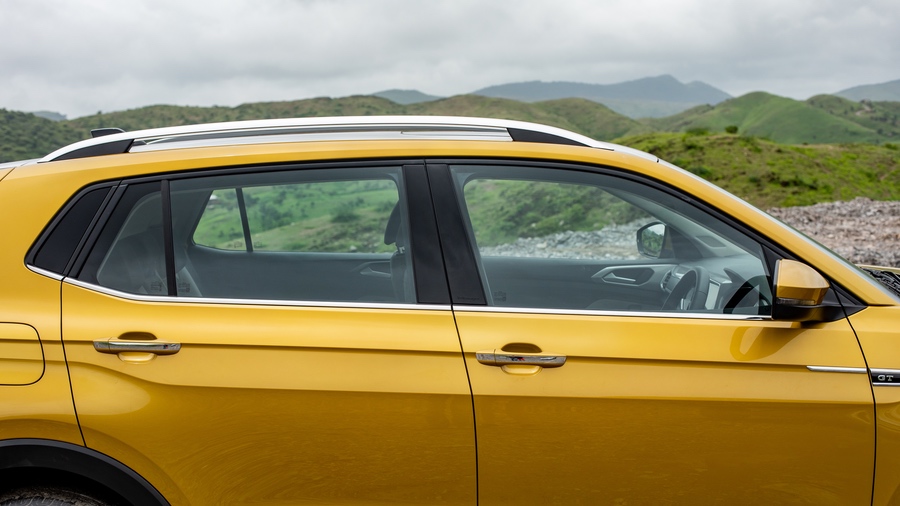
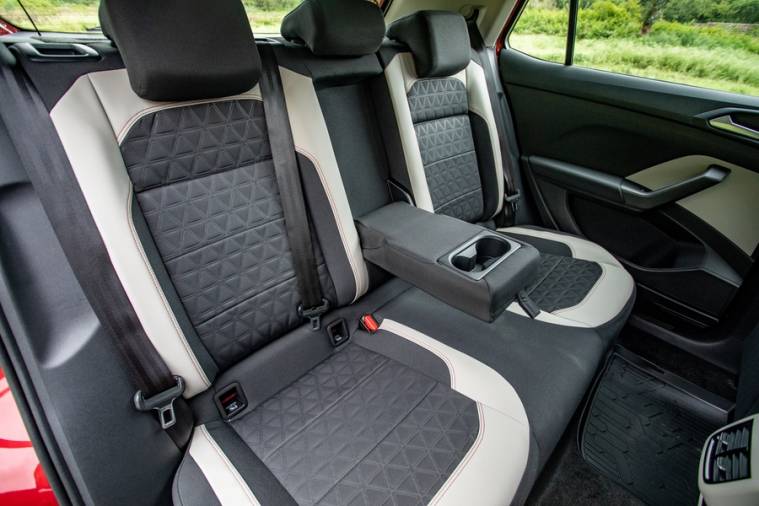
The doors open wide and ingress and egress is easy. There's the reassuring thud too, but the rear power windows are slow and noisy like we complained about on the Kushaq. The rear windowpane also sits high, only giving adults a good view of the surroundings. The rear seat has a near-flat bolstering for maximised shoulder room, but three adults abreast would be quite a squeeze. Seating comfort and the front and rear is pretty good and our 250km journey in Rajasthan did not seem tiring at all. I would have preferred slightly firmer cushioning though. The rear bench comes with its own AC vents, USB-C ports, a centre armrest and two Isofix child seat mounts - all of which is standard across the range.
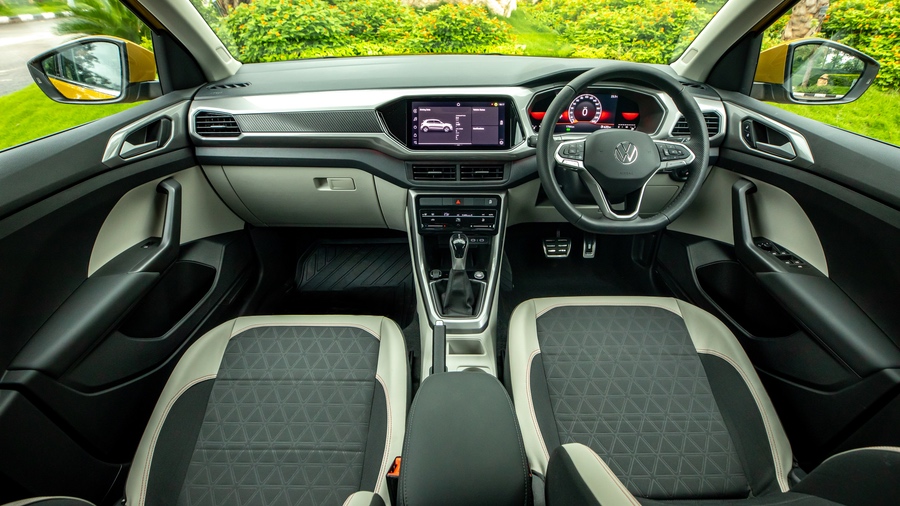
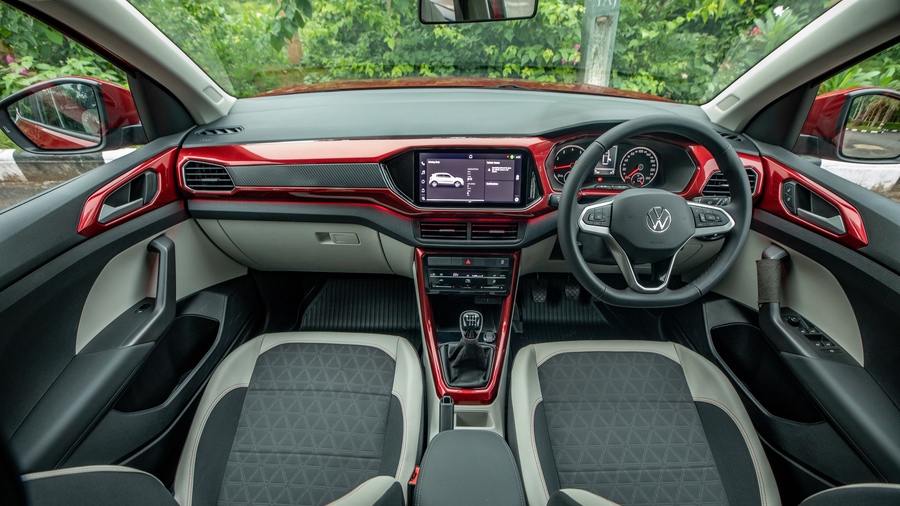
The front end of the cabin is far more elegant than the exterior and allows you to choose been sober styles done up in greys or a very hot-hatch like design with a cherry-red panel running across the length of the dashboard. The sportier GT variants also get red ambient lighting to go with it, with a perforated leather wrapping for the standard flat bottom (three-spoke) steering design. Ironically, the upholstery on the range-topping trim is fabric and therefore the ventilated seating function is only available on the mid-spec variants which get leatherette seats.
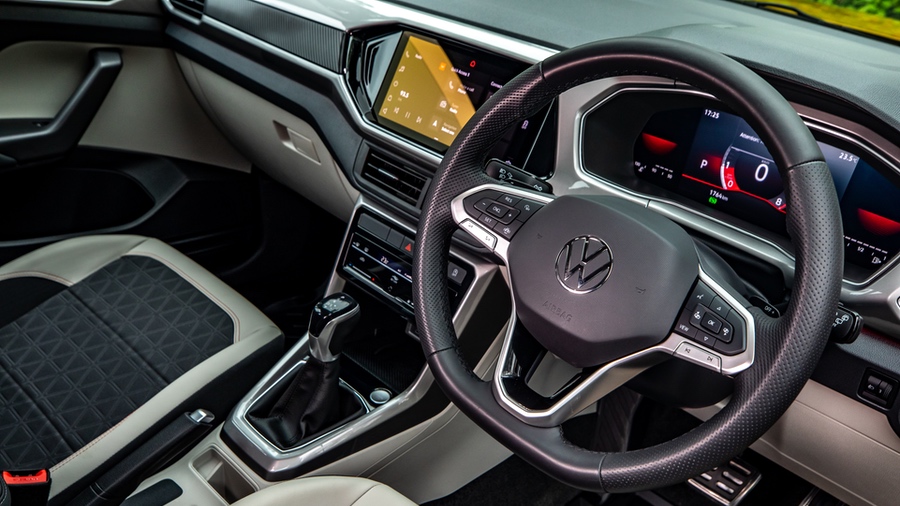
VW uses the same 10.25-inch Play infotainment system as its sibling but has gone with flush integration than a floating design. While I prefer the latter because it sits tall and doesn't need you to take your eyes too far off the road to get a glance, VW's integrated design has been executed rather well and the screen sits in line with instrumentation. The system has a very Android-tablet like feel in its layout, colours, resolution and functionality and that may or may not appeal to everyone. It allows installation of compatible apps and setting profiles, and has an intelligent Valet mode that will lock the infotainment and log the car's speed, position, warnings etc. when you hand over the car to a valet. It's a nice security measure, I think. If you would rather park the car yourself, you are likely to feel shortchanged with the dismal resolution of the reversing camera and its fixed guidelines.
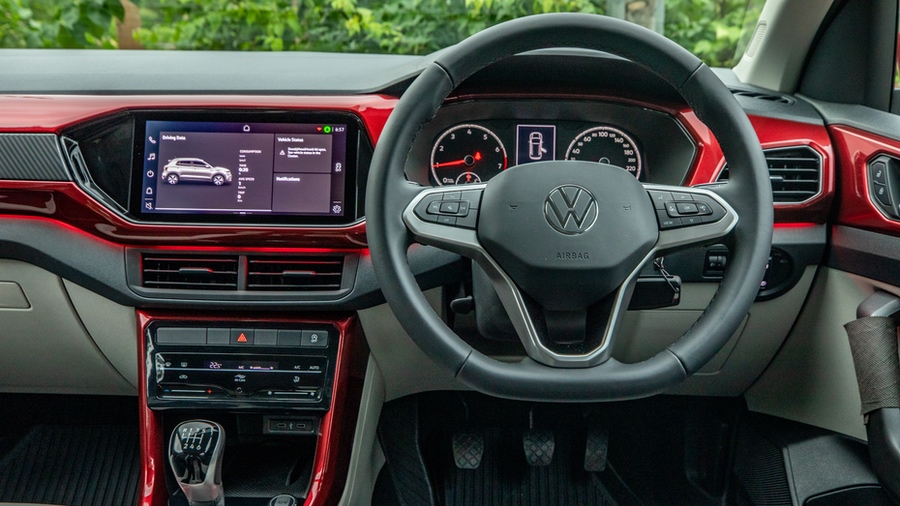
There is no satellite navigation nor do you get Google Maps as you get on the Virtual Cockpit in the Audis. In fact, neither will the installed Sygic mapping app, or the Google Maps navigation on the provided wireless Apple CarPlay or Android Auto be displayed here. Let me know what you think about it in the comments - should they have displayed turn-by-turn info here? Or are you more comfortable getting the larger map on the infotainment?
Where the Taigun edges ahead of the Kushaq is with the digital instrumentation. Not to be confused with the richer Virtual Cockpit, the Digital Cockpit shows only the vitals like speed, revs, fuel and trip status and music and telephony information via three preset layout options. It integrates well into the Taigun's design and colour choices though and instantly ups the premium feel of the cabin. While the lack of chrome lining on the central AC vents makes them look a bit plasticky like the scratchy dashboard top, the overall fit and finish of the cabin are otherwise very good.
Engine Performance, Ride and Handling
The Taigun has two turbo-petrol engine options - a 1.0l 115PS three-cylinder mill or the 1.5 TSI which is a stonker of a motor that has impressed us in the T-Roc too. In fact, we have been eagerly waiting to sample this stunning 150PS four-cylinder turbo with a manual transmission and the Taigun has gladly obliged. Get off the mark enthusiastically or get rolling calmly, you know that this engine means business. From the way it comes to life with a low idling rpm, or how nicely it builds revs, or how calmly it cruises at 100kmph at a mere 2,000rpm, you will appreciate the refinement and eagerness of the engine.
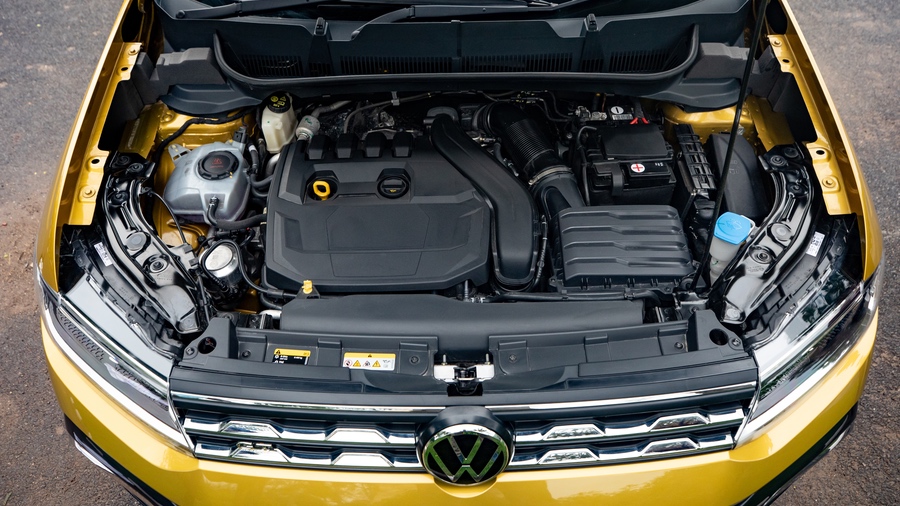
While some are likely to complain about the long clutch pedal travel, all will appreciate how light it feels compared to the springy clutch pedal action of older VWs. The shift quality is nicer too and doesn't feel as rubbery as its older counterparts. You can get off a traffic light in second gear if you like, but when pulling overtakes, you will realise that there is noticeable turbo-lag under 2,500rpm, needing you to maybe shift down a gear, or step on the throttle and get the turbo spooling. There is a fair bit of torque steer as expected under hard acceleration because this is after all a front-wheel-drive configuration, but there is an electronic differential to keep things sharp and tidy. The e-diff is also going to make the many VW tuners out there happy about the Taigun.
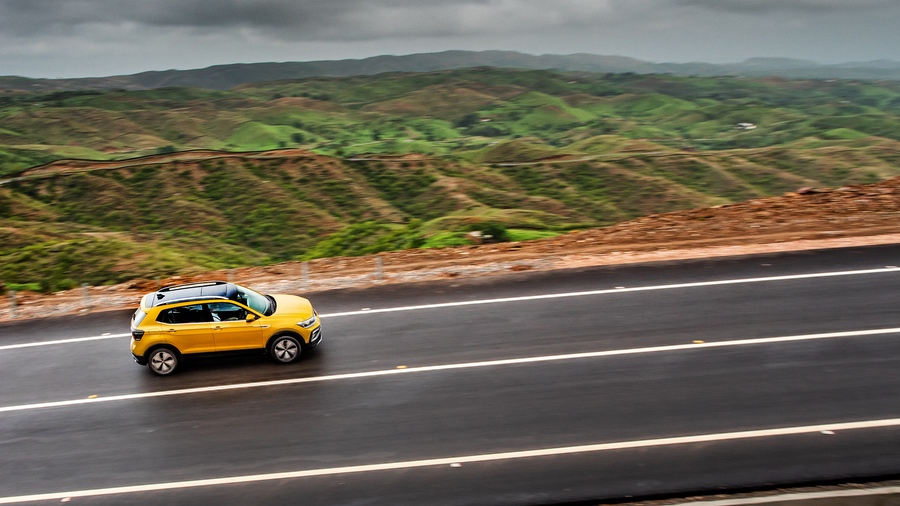
Choosing between the manual and DSG would be a difficult one as one gives you the joy of stick-shifts, while the other has the convenience of an automatic. But I'll side with the latter because its quick responses negate the effects of the turbo lag, and its S mode and paddle shifters still ensure that the joy of driving isn't lost. However, we managed a 9.4s 0-100 time with manual (9.0s claimed) vs a 9.8s in the DSG (9.1s claimed).
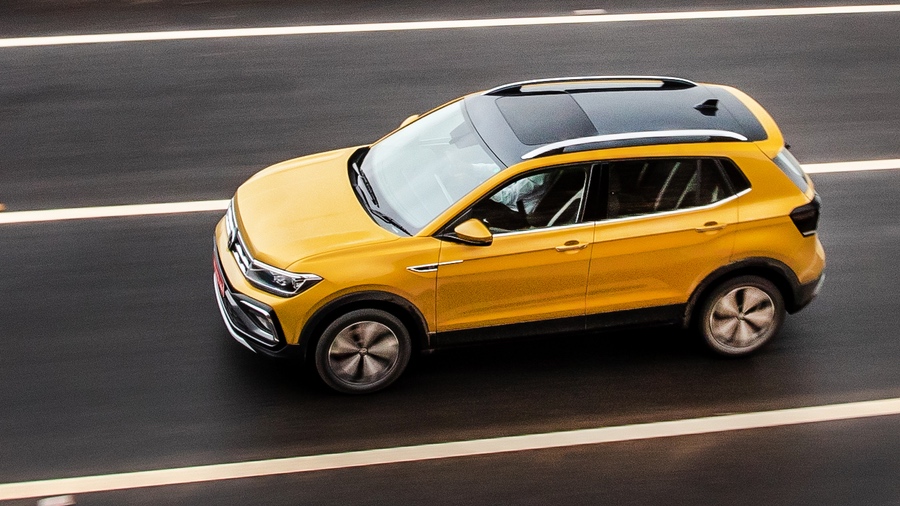
While the Taigun makes up in the features department compared to the Kushaq, this one too does not get any driving modes for sporty or economical driving, neither are there any traction control modes for varying terrain. But it does just fine on mild trails and bump pathways since there is enough ground clearance and give in the suspension for the rough stuff. The advantages of the Indian-ised MQB platform are evident as VW has been able to give the Taigun the ground clearance and suspension performance required for our roads. On that note, the NVH is excellent too and its only mild pedal vibrations that you feel when the 1.5l engine moves into its 2-cylinder mode for improving economy and reducing emissions.
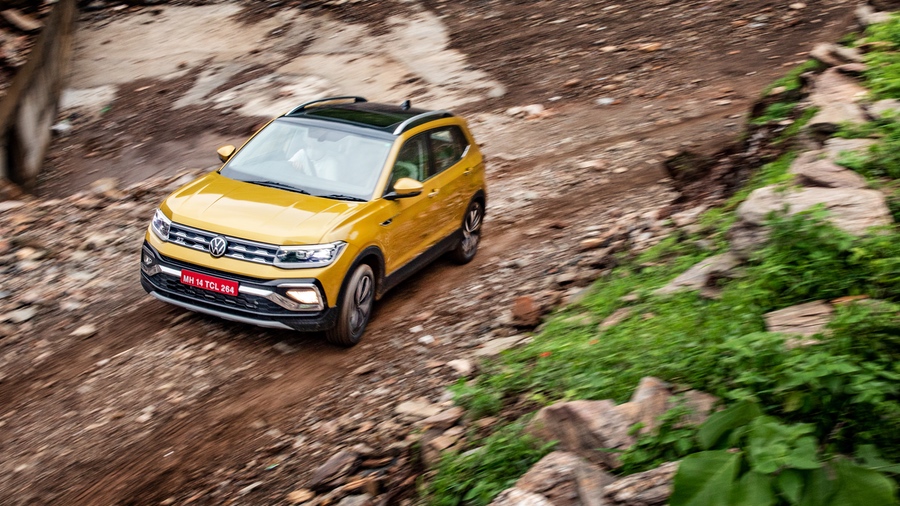
If you want taut handling dynamics from the Taigun, you are better off with the range-topping variants that run the 17-inch wheels. The mid-level trims that roll on 16-inchers have a noticeable squishier ride and it should appeal to those looking for a suppler performance on poor road conditions. There isn't much to choose between the Kushaq or the Taigun in terms of handling or ride quality, then and honestly both feel very similar. The steering too has a dead at-centre feel, is conveniently light for city use, and I would have liked it to weigh up more at highway speeds.
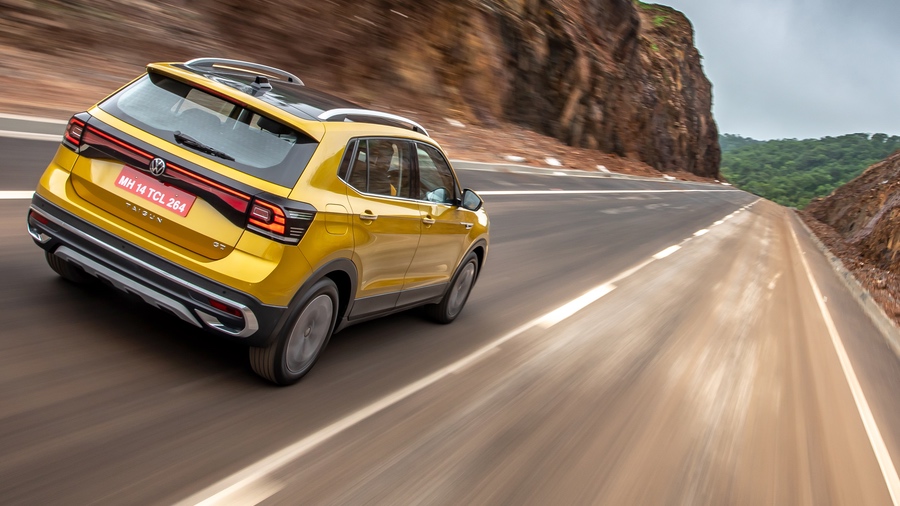
The Taigun may not have four discs, but the brake tuning is superb and progressive irrespective of the transmission or engine choice. There is a long list of safety features on offer too - most of which is standard across the range - the only optional features being six airbags and the low-line tyre-pressure monitoring system. And yes, both of these are available on the 1.5 DSG as well.
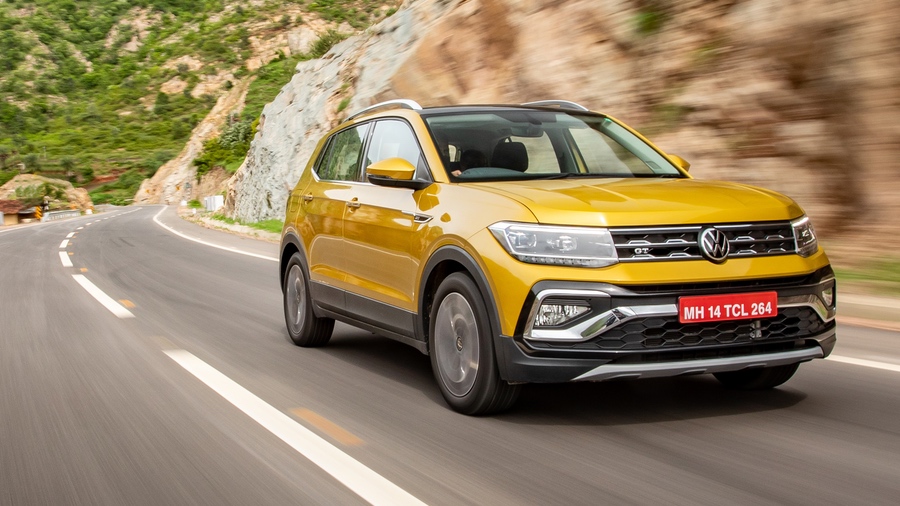
Verdict
Skoda and VW's 'India 2.0' is underway in full swing now. The Kushaq came out a couple of months back, has garnered 6,000 bookings and has helped Skoda achieve a phenomenal 320% spike in sales between June and July 2021. That shows how eagerly the market has been waiting for a European crossover in this space. The entry of the Volkswagen Taigun will only make it better for the group. With the equipment choices it makes, it comes across as the slightly more premium alternative, safeguarding VW's positioning of being the more upmarket brand. With an expected price difference of about 2-5% over the corresponding Kushaq variants, the Taigun could indeed be the better car to buy because the kit, in a way, justifies the price. But a full-fat comparison between the siblings and their cut-throat competition is now beckoning.
Starts Rs 10.5 Lakhs
1498cc
Automatic
115
250
17.88 Kmpl
Starts Rs 10.5 Lakhs
1498cc
Automatic
110
250
-NA-
Related Stories
Top Stories
Latest Videos
Most Popular
- Budget Sportbike Showdown: Kawasaki Ninja 500 vs Aprilia RS 457 vs Yamaha YZF-R3
- 2014 Triumph Daytona 675 vs 2024 Kawasaki ZX6R - A Decade of Evolution in Supersport Motorcycles
- Mumbai-Pune Expressway speed restrictions updated
- Nissan Magnite EZ-Shift review - is the AMT any good?
- Nitin Gadkari states that tax on Hybrids should be reduced to 12 percent in the coming future
